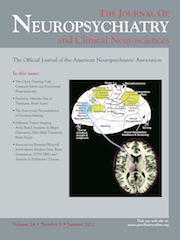Environment Multiple-Layer Map, Inspired From Hippocampal Function
To the Editor: One of the most important issues in robotics is environment-mapping. Nowadays, robotics is going to make robots think like humans. We proposed a novel model of environment-mapping for mobile robots that is based on hippocampal function. In the past three decades, several approaches have been introduced for environment-mapping. Chatila and Laumond in1 have introduced the metric map that is based only on environmental geometric information. Matari'c has proposed topologic map that is expressed as a graph, based on the relationship between different regions.2 Mozos et al.3 provided a conceptual map that enables robots to perceive the environment like humans. Mark C. Fuhs4 presented a map based on the neural network, which was inspired by hippocampus cells. Tokunaga and Furukawa in5 used vision to display maps in a two-level, self-organizing map. However, in the case of a high-resolution map, its complexity increases.
In the map presented in this letter, topologic and metric maps are combined. The function is inspired from that of the hippocampus: there are place-cells in the hippocampus. In an experiment conducted on rats, each of these cells shows activity in specific locations of the environment.4 Thus, union of these cells covers the whole space of the environment. We provide a map for autonomous robots inspired by these cells. The localization done by this concept maps easily and is like that of the brain.
The map presented here is a multilayer network of neurons in the brain. In the first layer, a clustering operation is performed for the representation of the environment. Links between nodes of the upper and lower layer act as synapses. The number of neurons in the second layer of the model is equal to the number of clusters. Each node represents a cluster. Each cluster refers to a region of the map that has one or more common attributes. It is noteworthy that the higher-layer features are more general and comprehensive, to do the clustering. Final nodes (leafs) act as place-cells. This action will repeat until the map achieves the desired accuracy of localization.
The rate of localization is from the log-order of the presented map. Each map layer can be mapped to several episodes. Each node of the layer above can mapped to some node in the lower layers. This action continues until localization reaches enough accuracy. The number of comparisons is equal to the number of nodes in each layer.
The map proposed here is inspired by the function of the hippocampus. This is a combination of metric and topologic maps. Therefore, it is based on geometric information and relations from the environment. Moreover, it has multiple layers, like the hippocampus, which localizes at high speed. We hope to develop robots with memory abilities similar to that of human beings.
1 : Position referencing and consistent world modeling for mobile robots, in Proceedings of the IEEE International Conference on Robotics and Automation, 1985Google Scholar
2 : A distributed model for mobile robot environment-learning and navigation. Master’s thesis, MIT, Cambridge, MA, January 1990Google Scholar
3 : Conceptual spatial representations for indoor mobile robots. Robot Auton Syst 2008; 56:493–502Crossref, Google Scholar
4 Fuhs MC: Space and context in the rodent hippocampal region. Ph.D. thesis, School of Computer Science Computer Science Department Carnegie Mellon University Pittsburgh, PA, November 2006Google Scholar
5 : Building a cognitive map using an SOM2. Journal of Automation, Mobile Robotics, and Intelligent Systems 2010; 4:39–47 [JAMRIS]Google Scholar



